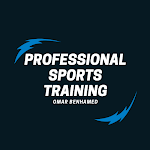The Soccer Games and Drills Compendium PDF
to be competitive in top soccer? This compilation of attractive training exercises offers versatile content that makes it possible to specifically emphasize technical or tactical goals.
The goal was to create age-appropriate effective training units for the hard-working, hard-running, and technically accomplished team player.
This was done primarily in close communication with the DFB basecamp trainers and the Hamburg Soccer Association’s select team coaches, whose good ideas had to be developed further and put into a form that readers could comprehend.
This book contains many variations that did not just go straight from the desk into the book, but nearly all of the drills were tested, modified, and refined with the help of the DFB talent development program’s different age groups in Hamburg and within the HFV’s select soccer program, chiefly the age groups 1998, 1999, 2000, 2001, 2002, and 2003 (U19 to U12—a broad bandwidth). Fabian Seeger started the process on October 1, 2009, as DFB basecamp coach at the DFB basecamp Sachsenweg in Hamburg.
Working with the different age groups and constantly trying out his ideas and tips from other sources resulted in a broad spectrum that allowed for the content of this book to develop into this user-friendly version.
Since then, there has been an awesome exchange, and I congratulate him on his diligence in creating something new from what he saw and for adding a new spin and realistic stimuli to standard drills.
I still, today, feel greatly motivated by our joint efforts to devise complex exercises for top talent that create meaningful learning processes with a variety of guidelines.
Counteracting monotony while creating experience-oriented, fun training units for long-term fun and learning success.
I hope this book will be widely read and the training exercises well used.
A significant and universal goal of training is the best possible preparation for a competition. Ideally, it is particularly those movement patterns and behaviors required and practiced in a competition that are practiced during training.
During a competition, a player is confronted with different situations and various decision-making options.
What matters in the end is which problem-solving approach he chooses to purposefully reach the situation-specific result.
And yet successfully solving a game situation does not always consist of scoring a goal or winning the ball.
In fact, there are many sub-goals that, in the end, result in successfully scoring goals and preventing goals.
For the purpose of realistic training, chapter 1, Games, focuses on the development of certain drills that reproduce the complexity of 11-on-11 play on a smaller scale.
The many challenges of different competitive situations can be combined as areas of focus in training to allow the conception of different drills with different objectives.
In the process, individual training parameters, such as field size, team size, or number of goals, can be purposefully used to work on the current training topic.
In doing so, the listed training parameters are in no way intended as mandatory factors, but rather should always be adapted to the team’s respective performance and skill level as well as age group by the implementing coach.
Competitive soccer consists of widely different situations in which the players must largely act together.
During training, the complexity of 11-on-11 is decreased, and segments of the game are separated. Looking at specific game situations and scaled-down game sequences generates drills that, next to fitness-related and technical requirements, focus primarily on individual and group tactics.


Post a Comment